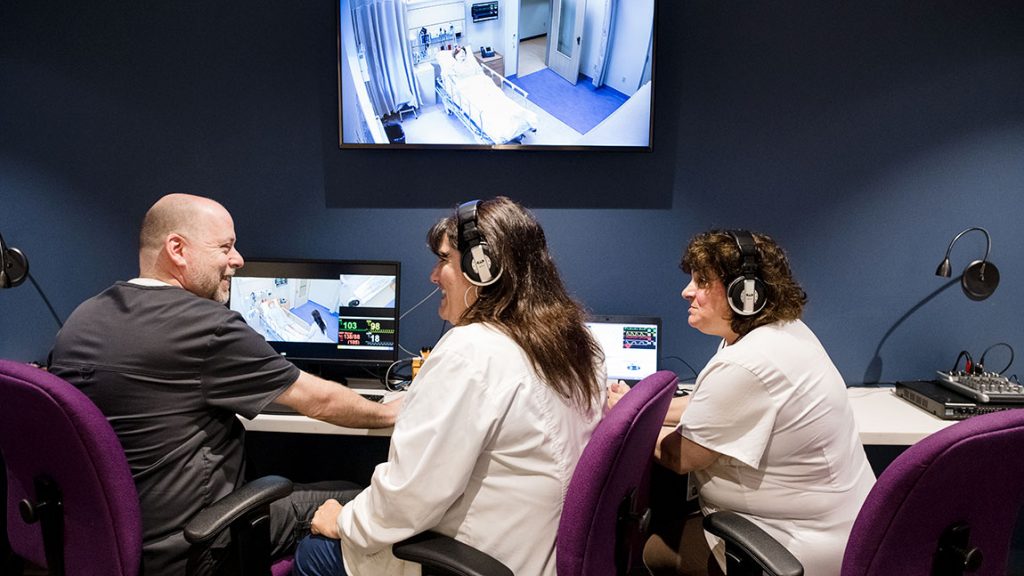Celtic Simulation Center for Innovative Learning
Carlow’s Celtic Simulation Center for Innovative Learning (CSCIL) is a simulated hospital environment that enhances experiential learning. Using lifelike simulated patients with realistic and functional anatomies, students work through predetermined scenarios to practice procedures and decision making in a safe and realistic environment.
CSCIL’s mission is to provide culturally competent, evidence-based experiential learning. To ensure an authentic student experience, the lab features a variety of patient simulators, interactive touch screen monitors, telehealth nursing, realistic medication delivery systems and digital patient records.
Features of lab
Simulation
- SimMan 3G displays both neurological and physiological symptoms, as well as responses to various simulated drugs and procedures. The patient can talk, cry, urinate, perspire, bleed, wink and have a seizure. Its voice processor can reproduce a range of vocal genders and ages.
- The SimMom patient simulator provides hands-on training for every stage of labor and delivery as well as care for a nonpregnant female patient.
- SimJunior represents a 6-year-old patient with a wide range of conditions from healthy to unresponsive.
- SimBaby allows students to gain confidence in the assessment, diagnostics and treatment of infants. It is programmed to cry, hiccup, coo and even experience blue lips from poor air circulation. Students are able to monitor radial, brachial and femoral pulses.

Additional features
- The highly realistic Nursing Anne Simulator allows students to practice a wide range of competencies, from basic assessments and critical thinking to advanced interventions. Anne is wireless and battery-powered so she can be remotely controlled and run complex mobile simulations almost anywhere.
- Medication carts are used for administering medicines, tracking patient admissions and accessing electronic medical records, as well as telemedicine diagnostics.
- Individual patient rooms replicate actual hospital rooms with working examination equipment, working air and suction, and AV equipment to allow instructors to interact with learners in a realistic manner.
- Networked computers allow students and staff to check their mail, look up patient information, andcheck for nursing tips and resources at the Nurses Station.
© Copyright 2024 Carlow University. All rights reserved.